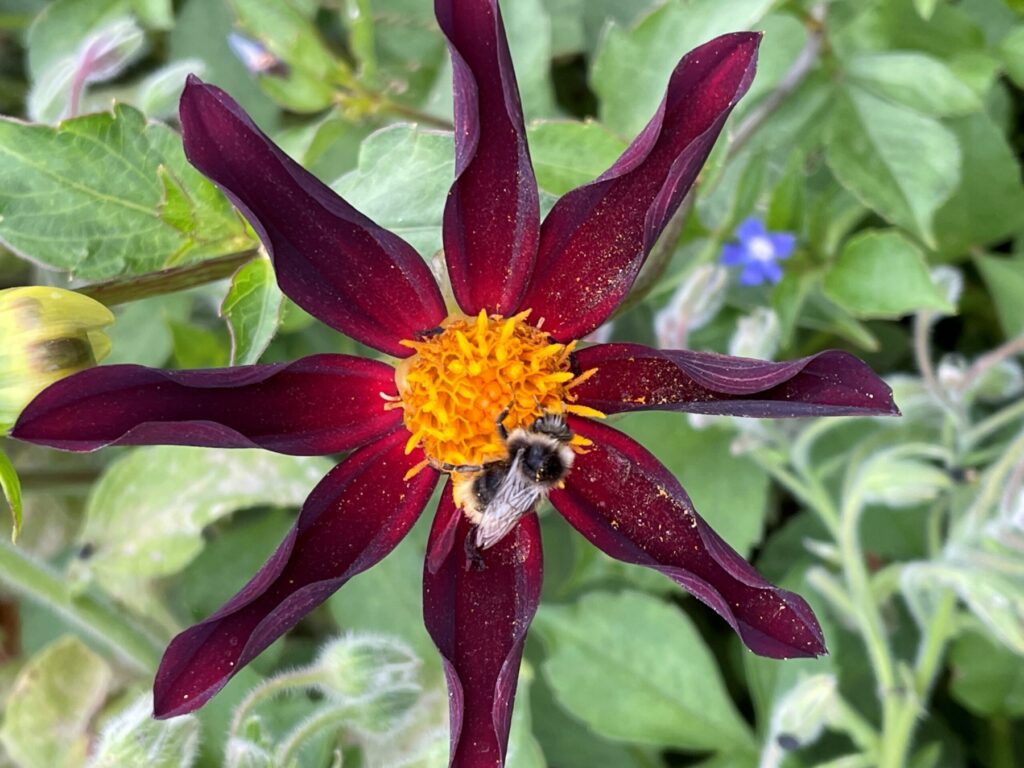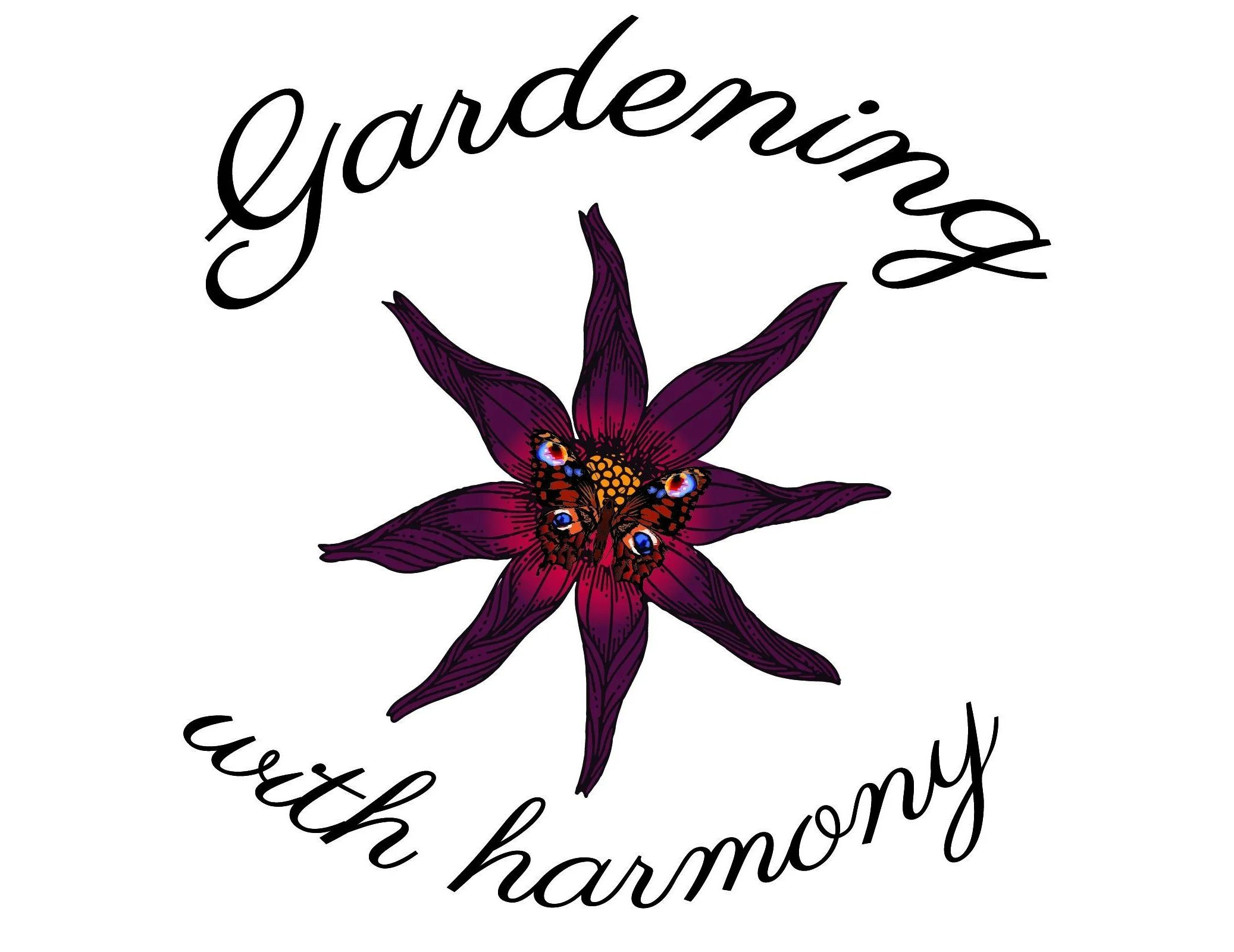I thought I would share some of the wonderful wildlife I have seen in my garden this month. Once the warmer weather arrives, the bees and butterflies come flying in. Of course, there is plenty of other spectacular wildlife too.
I love my garden in May because there is so much colour with more flowers bursting into bloom every day.
Naturally, there are plenty of weeds to remove but this is part of the fun. I shall remind my dear friend, the Cosmos Queen, of this when we talk later. She hates weeding with a passion!
However, weeds need to be removed so they cannot multiply, and this gives us room for plenty more flowers.
I met with the Cosmos Queen earlier this week and she left with a car stacked with plants I had grown for her. Consequently, some turbo charged weeding had to take place and all her new flowers were planted and watered.
Right, onto some wildlife and flowers in my garden this month, starting with a photo above of a beautiful peacock butterfly on my fragrant lilac. And another butterfly photo below with purple alliums.
Alliums for butterflies

May is a fabulous month for alliums and my Purple Rain is currently putting on a fantastic display. Seen in the photo above with a beautiful red admiral butterfly.
I also have allium Purple Sensation in flower and Siculum in bloom at the moment.
All alliums, also known as ornamental onions, are loved by pollinators. These wonderful bulbs attract butterflies, bees and hoverflies so they are well worth growing in your garden.
Furthermore, they are beautiful and as most are a fabulous purple colour, they make a colourful display in the garden.
I love purple so the more alliums I can grow the better!
More wonderful wildlife

My next photo is a broad-bodied chaser dragonfly. This one is a male as he is blue. The female is yellow and has also been visiting my garden this week. However, she flew around the pond and refused to settle for some photos.
I shall continue to crouch by my ponds and hope to have more luck with photos soon.
As I have found out that they consume their own body weight in insects such as the mosquito in about half an hour, they are very welcome in my garden too. Clearly wonderful wildlife bringing huge benefits to those of us prone to gnat bites!
Dragonflies breed in the summer, and I am hoping to spot the female dipping her body in one of my ponds and laying her eggs.
As the eggs take about to week to hatch into nymphs, I might manage to see some in the ponds if I do some pond dipping. Fingers crossed.
The fabulous robins

My next photo is of one of the robins who have been breeding in my garden recently. I published a post on the courtship and subsequent birth of three fluffy chicks. Link below if you have not seen this one.
Two beautiful robins in my English garden
After feeding his partner and then the chicks, he spent time with the fledglings. Once his work was done, I noticed that he spent some considerable time bathing in one of my ponds.
As you can see above, he was often wet and would fly across to demand more meal worms.
I think that they are breeding again now, as the baths are shorter, and he is on turbo charged meal worm delivery over the hedge.
As the robin is the UK’s favourite bird, they really are wonderful wildlife to share our gardens.
Busy bees

My next photo is the first cosmos to bloom for me this year. With thirty two varieties sown and planted in the garden, I should have a fantastic display of colour this year.
Moreover, I will have plenty of flowers for the pollinators for months on end. The bumble bees were the first to visit, followed by the hoverflies. The beautiful butterflies will follow.
If you have not sown any cosmos yet, there is still time to get some seeds and direct sow outside.
There are short varieties for pots and window boxes as well as tall ones for the backs of flower borders, in so many colours and flower shapes.
I have pasted some links below if you need some cosmos seeds.
Cosmos seed options from Thompson and Morgan
Wonderful wildlife, ladybirds

My next photo shows some ladybirds breeding on a red campion plant.
I have never seen so many ladybirds in my garden as I have this year.
Clearly, to have so many of these beneficial insects, there is plenty of rumpy pumpy going on!
Unfortunately, all the red campion flowers are covered in aphids, so the ladybirds are very welcome and have an abundance of food to munch.
Primarily, it is the fabulous ladybirds that deal with the aphids, although hoverflies, lacewings, beetles and some wasps are joining in the aphid munching 24/7 party.
On the positive side, the red campions have become sacrificial plants, and the aphids are staying away from all my other flowers. Famous last words!
30 Days Wild

I took part in 30 Days Wild last year and had enormous fun, whilst learning more about the wildlife in my garden. Therefore, I can thoroughly recommend taking part this year.
If you wish to learn more, I have added a link below. The challenge runs through the 30 days of June so there is plenty of time to sign up.
https://www.wildlifetrusts.org/30dayswild
I published weekly blog posts during last year’s challenge, which can be seen below, if you wish to take a look.
30 Days Wild. First week challenge 30 Days Wild, week two of the challenge
The fantastic wildness of magic week 3 Wild 30 Days. The beautiful finale
I hope you have enjoyed this post and will see plenty of wonderful wildlife if your gardens.
This blog is an affiliate for Thompson and Morgan. If you click on the links for cosmos seeds, and make a purchase I may receive a commission, at no additional cost to you.
To see all my new posts, please enter your email address below and press the subscribe button.



4 responses to “The wonderful wildlife in an English garden”
Great post. Wildlife in the garden is very important to me. I try and keep their health and safety at the front of all I do. And try to encourage more. I could do more and we all could so I will keep trying x
Thank you Kevin. Pleased you like the post. Great news that you garden for wildlife too and encourage more into your garden. Fantastic that so many of us do care for wildlife and as you say, we will keep trying to do even more. xx
Love the Holly Blue😍. And the ladybirds🤭
Fabulous colour, Holly Blue isn’t it. Seems to be more of them this year which is great. Hope they visit your garden too and plenty of ladybirds to eat the aphids. 😁😁